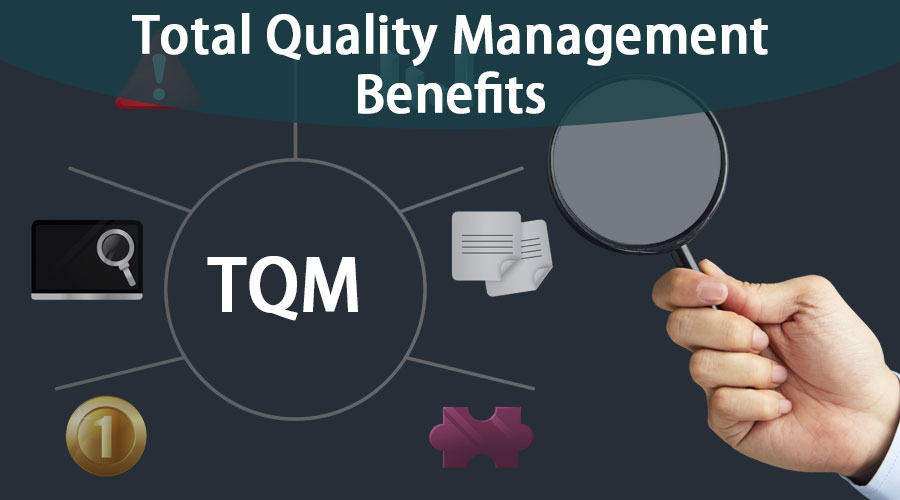
TQM originated in the manufacturing sector, but its principles can be applied to a variety of industries. It provides a cohesive vision for systemic change with a focus on long-term change rather than short-term goals. TQM is used in many industries with this in mind, including accounts receivable and accounts payable but not limited to manufacturing, banking and finance, and medicine. Effective communication plays a large part in TQM to motivate employees, educate members along a process, and avoid process errors, whether it is normal day-to-day operations or large organizational changes.
Improved Customer Satisfaction:
Implementing a QMS requires companies to define and describe the best practices for all business responsibilities, from quality control to management review. Creating standard operating procedures (SOPs) and a prescribed series of checks and balances minimizes the risks of nonconformances and maximizes organizational efficiency. In the automotive world, Toyota’s embrace of Kaizen to streamline production, reduce waste and improve product quality is a classic application of the total quality management principles. Adopt this approach with all your major processes, and customer centricity naturally becomes front and center of how you do business. This is a critical element of how total quality management is defined and executed. The total quality management approach aims to embed quality in every aspect of an organization, ensuring that every process is carried out correctly the first time and defects are minimized to zero or near-zero.
Elements of Total Quality Management (TQM)
This method enhances job satisfaction and improves the employees’ morale, keeping them engaged in organizational goals. Businesses rise if they generate high-quality goods and/or services in the market. This consistency in providing quality products increases competencies with rivals by attracting more customers and strengthening the position in the market.
Better Cost Management:
They iterated on this in 1951 with the launch of the Creative Idea Suggest System which was loosely based on a suggestion system used by their competitor, Ford. Toyota was awarded the Deming Application Prize in 1965 for their major advances in quality improvement. In 1994, the “Toyota Group Executive TQM Training Course” was established, which provided deep TQM training for all executives. They continue to utilize TQM and are a leader in how to be both process-oriented and adaptable.
- This American statistician, engineer, and management consultant laid many foundations for the use of statistics in production and work management.
- Developing quality measures involves setting up metrics that reflect the organization’s performance in terms of quality.
- This involves defining the organization’s vision (what we aspire to be), mission (our purpose), and specific quality goals (what we aim to achieve in terms of quality).
- Effective communication is a key enabler to the delivery of TQM, maintaining employee morale and motivating employees at all levels.
This requires substantial buy-in from every department across an organization. This level of commitment is very difficult to achieve, requires substantial financial investment, and necessitates all levels of management to engage in TQM. As TQM touches every department across an organization, a company may reap substantial savings from materials sourcing, production, distribution, or back-office functions. Companies that successfully implement TQM can usually react more quickly to change and proactively plan ahead to avoid obsolescence. A company’s processes and procedures should be a direct reflection of the organization’s vision, mission, and long-term plan. TQM calls for a system approach to decision-making that requires that a company dedicate itself to integrating quality as its core component and making the appropriate financial investments to make that happen.
Employees in all roles and at all levels must be involved and aligned with the organization’s objectives and must be committed to continuous improvement. U.S. producers throughout the 1970s and 1980s adopted quality and productivity methods, including TQM, to better compete in the increasingly global marketplace. Another example of TQM occurred at Tata Steel, a steel-making company based in India and a subsidiary of Tata Group.
To encourage business-wide participation, provide employees with all necessary training. To have a customer-focused TQM process, start by determining your customers’ needs, desires, and roadblocks to success. You can get more information about your customers by creating buyer personas, soliciting customer reviews and or feedback, and conducting customer interviews. Its goal is to modify the product and service development process so that they’re more valuable to the customer. It‘s important to keep a TQM strategy objective and focused and the quality function deployment method does exactly that. This method has a clear framework that keeps things on track – plus, it’s easy to share with other departments in order to foster collaboration.

Research indicates that Total Quality Management (TQM) affects 71.7% of productive behavior. Thus, a thorough understanding of TQM and its implementation is vital for businesses. TQM focuses on achieving long-term goals to deliver high-quality products successfully in the competitive market. Based on the performance data, the organization should make necessary adjustments and improvements to their processes and practices to ensure that they continue to meet or exceed customer needs and expectations. Additionally, the organization should continuously monitor the performance and customer feedback to ensure the sustained success of TQM.
The definition of TQM comes from each word in its name — Total Quality Management. First, Total describes the process as it involves all organization members, from order fulfillment to marketing to sales. Everyone is working towards the same goal, and all teams are accountable for results.